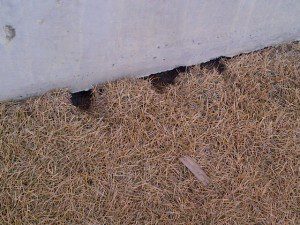Vole Insect Control Demystified: A Total Summary of Infestation Discovery and Efficient Treatment Techniques
As residential or commercial property proprietors and yard fanatics, the invasion of voles can be a relentless problem that calls for a methodical method for effective administration. By recognizing the behavior patterns of these elusive rats, one can gain important understandings into their practices and choices. From refined signs of infestation to the implementation of targeted control steps, browsing the world of vole pest control demands a mix of expertise and calculated action. In this thorough summary, we will check out the subtleties of vole infestation detection and explore the world of reliable treatment approaches that can secure your rooms from these below ground nuisances.
Recognizing Vole Behavior Patterns
Comprehending the elaborate habits patterns of voles is essential for successfully executing pest control measures in domestic and farming settings. Voles, small rodents that appear like mice yet with stouter bodies, are well-known for their fast recreation rates and starved hungers for plant life. By diving right into their actions patterns, parasite control professionals can obtain valuable understandings right into vole vulnerabilities, habits, and choices.
Voles are mostly herbivores, feeding on a variety of plants, light bulbs, roots, and bulbs. They are additionally prolific tunnelers, producing fancy underground burrow systems for nesting and foraging. By understanding these behaviors, bug control experts can tactically put traps and lure stations along vole paths and entry points, boosting the chance of effective removal.
Furthermore, knowledge of vole habits patterns can help in creating safety nets to deter future problems. By dealing with aspects that bring in voles, such as thick vegetation cover and conveniently available food sources, homeowner can make their properties much less inviting to these damaging parasites - vole control. Finally, an extensive understanding of vole behavior is paramount in designing lasting and effective parasite control techniques
Identifying Indications of Vole Invasion
Effective vole parasite control starts with without delay recognizing the telltale signs of vole infestation on residential or commercial properties. Among one of the most typical indicators of vole existence is the existence of surface area runways. These paths are slim paths with yard or vegetation that voles produce as they travel in between their burrows and food resources. Additionally, vole droppings are another clear indication of infestation. Vole droppings are tiny, cylindrical pellets that are usually discovered along their paths or near their burrows.
In addition to droppings and runways, munch marks on tree bark and plants are also indicators of vole task. The existence of burrow openings in the ground shows an energetic vole populace.
Being watchful for these indicators can assist building proprietors spot vole problems early and take ideal insect control procedures to avoid more damage.
Applying Targeted Control Measures
What details methods can be used to efficiently implement targeted control measures for vole bug monitoring on residential properties? Carrying out targeted control measures for vole pest monitoring needs a multi-faceted technique that integrates both avoidance and elimination methods. One of the crucial techniques is environment alteration, which involves getting rid of vole-friendly environments such as tall turf, weeds, and debris near structures. Installing obstacles like hardware cloth or gravel around yard beds and tree trunks can also help hinder voles.
Capturing is one more effective technique for managing vole populations. Live catches can be strategically positioned along vole runways or tunnel entryways, baited with peanut butter or apple pieces. When captured, voles need to be humanely removed to a various their explanation area to stop reinfestation.
Rodenticides can be used as a last hotel for serious infestations, however care should be exercised to prevent damage to non-target pets. When making use of rodenticides for vole control - vole yard damage., it is vital to comply with all safety and security standards and laws.
All-natural and Eco-Friendly Remedies
The adoption of eco conscious techniques can play a critical function in taking care of vole populaces without causing injury to the ecosystem. All-natural and environment-friendly remedies supply a lasting method to vole parasite control, reducing using unsafe chemicals and promoting biodiversity in the influenced areas.
One reliable natural method is the usage of predator pee or killer decoys. Killers like snakes, foxes, and owls are the vole's all-natural enemies. By purposefully placing killer urine or decoys around the infested areas, voles might be discouraged from settling in those areas.
Furthermore, planting here are the findings vole-resistant plants can assist in reducing vole damages. Plants such as daffodils, crown imperials, and Siberian squill are understood to be unattractive to voles and can act as natural repellents.
Furthermore, producing physical barriers like wire mesh or crushed rock around vulnerable plants can prevent voles from accessing them. These barriers can aid safeguard yards and landscapes without posing any kind of threat to the environment or various other non-target varieties. By integrating these natural and environmentally friendly treatments, vole invasions can be taken care of successfully while keeping environmental balance.
Long-Term Prevention Approaches
To sustainably resolve vole invasions over time, applying proactive procedures is essential for long-lasting prevention techniques. By minimizing thick vegetation, compost, and clutter around buildings, you can make your home much less attractive to voles.
Normal surveillance of vole task is important for early discovery of any signs of problem. Setting up vole traps can aid in controlling their populace prior to it ends up being a full-blown invasion. It is likewise crucial to seal off any kind of entrance points to structures or buildings to avoid voles from accessing.

Conclusion
To conclude, understanding vole behavior patterns, identifying indications of infestation, carrying out targeted control measures, making use of eco-friendly and natural solutions, and carrying out lasting prevention approaches are important you could try this out action in properly taking care of vole infestations. By being aggressive and taking the needed steps to attend to vole problems quickly, individuals can efficiently protect against and control vole invasions in their residential or commercial properties.
